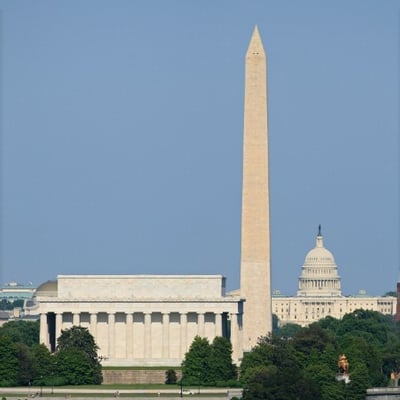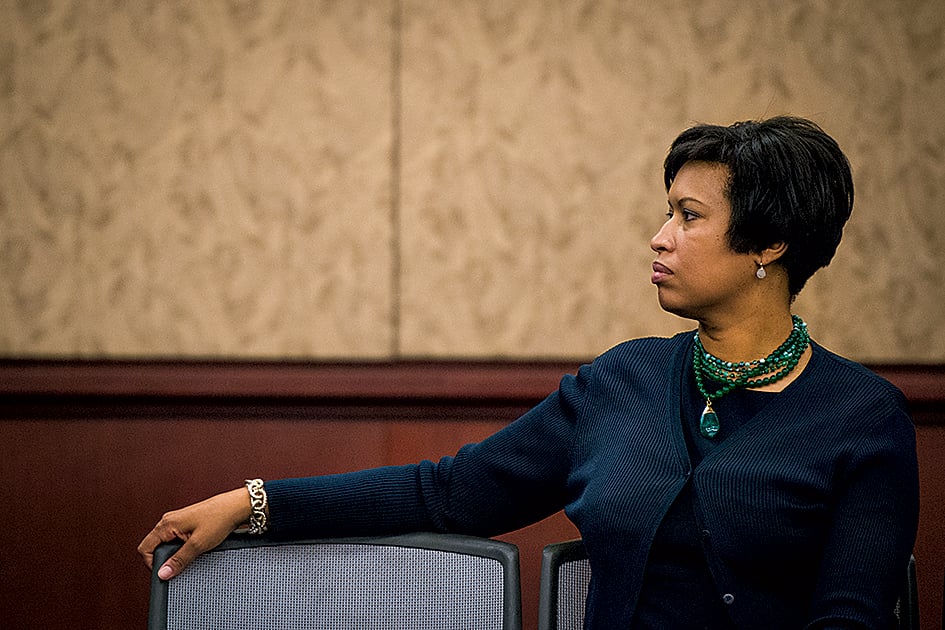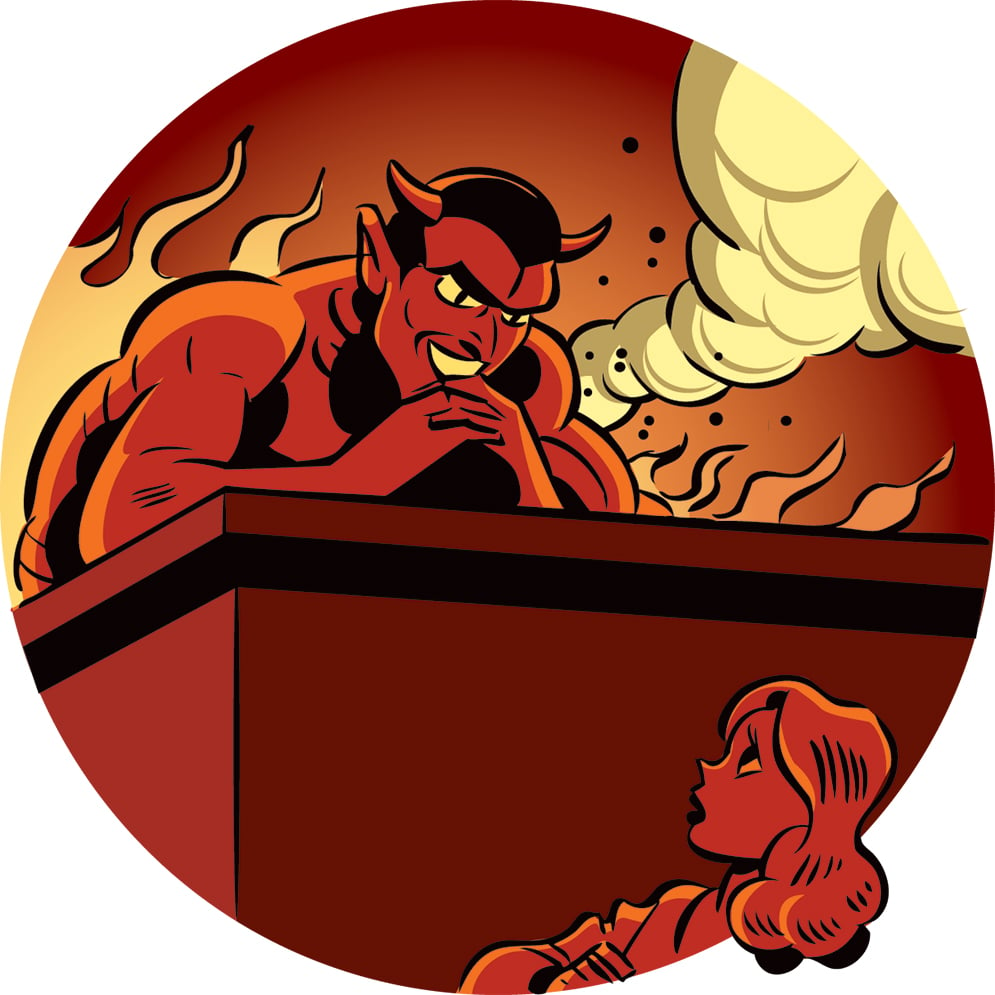
The general consensus on Washington interns is that they’re clueless at best, a scourge at worst. It’s not your fault, interns (mostly). You’re just new people in a new town, and no one’s given you a handbook on how not to be.
No orientation you’re scheduled for is going to give you the following tips. You can find out where to get a drink from a laundry list of Washington blogs and publications, but who’s going to tell you there’s no J Street? My name is Jazelle. Right now I’m an intern, too, except I’ve been in DC since 2005 and I’ve learned a few things. You don’t have that kind of time, so let me save you the trouble. First things first.
Get A SmarTrip Card and Pay Attention to Metro Etiquette
Your best bet for transportation is of course the Metro system, both bus and rail, which takes you around town and beyond (there’s even a bus to Dulles Airport for $6—beat that, Super Shuttle). While the Metrobus system takes more familiarity to navigate, it’s not only cheaper than Metrorail, but there’s also a bus-to-rail discount if you use a SmarTrip card.
Get a SmarTrip, even if you’ll be here only a few months. This sturdy plastic card is essential to commuting: It’s cheaper than using paper farecards or cash, you can register it so you get your money back if you break or lose it, and it gives you access to almost all of the area’s transit systems. You can buy it at stations with parking garages, online, and even at your local CVS. By the way, if you put your SmarTrip on the outside of your wallet, it’ll scan right through, which will also help you avoid holding up the fare-gate line (a big no-no).
If you’re still using the paper version, remember to keep your farecard away from your cell phone, or it will demagnetize and you’ll lose whatever money you put on it. If you want the money back, you’ll have no choice but to (a) be late to work because the station manager took a million years rustling around for the proper refund forms and (b) make time to visit the Metro Center sales office to retrieve your refund.
Speaking of being late, random Metro factoid: Unlike public transportation systems in other cities, the Metro system actually closes late at night (midnight on weekdays, 3 AM on Fridays and Saturdays—or to be technical, 3 AM on Saturday and Sunday morning). Don’t learn this the hard way after a night out or you’ll likely have to flag down a cab for an expensive ride home.
Another Metro note: As you get closer to downtown DC, the stops are often only blocks apart. Sometimes you’re better off walking. For example, if you’re going to Gallery Place and you’re on the Blue or Orange line, there’s no need to transfer to the Red at Metro Center—Gallery Place is three blocks over (and it will spare you the experience of being pressed up against people on the crowded Red Line).
The final thing I’ll say about Metro is that there are unspoken customs, which you’ll learn over time. Ride the escalator on the right (if it’s working at all); walk on the left. Wait until all the SmarTrip passengers get on the bus first if you’re paying with a handful of couch-cushion coins (so you don’t hold up the line, and thus the driver who’s running on a schedule). Do as the Washingtonians do until it all becomes second nature.
Taxis: Keep Your Destination a Secret Until the Meter Starts
Taxis in this city can be annoying. If you live in Virginia or Maryland but hang out in DC, city cab drivers may be reluctant to drive you home because it’s unlawful for them to pick up passengers inside Virginia for the trip back (and vice versa: Virginia and Maryland cabs can’t pick you up in DC). Many drivers will leave you standing on the curb if you tell them you’re crossing state lines, despite the fact that it’s against the law for them to refuse to take you someplace based on your destination. There are also small fees for everything. Want to use the trunk? That’s $1. Did you bring friends? Each of them is an additional $1.50. Did you call the dispatcher? That’s $2, please. This is on top of the $3 base price, the current (though temporary) $1 gas surcharge, and whatever cost you rack up at 25 cents per one-sixth of a mile. And did you know that taxi drivers rely on tips?
Next: Traveling without Metro, having fun, penny-pinching and more helpful tips
Metrorail Is Not the Only Way to Get Around
One of the many nice things about DC is that it’s one of the most bike-friendly cities in the country. There are numerous ways to rent bikes, but the easiest is Capital Bikeshare, which allows you to rent a bike only for the time that you need it. If you’re going to use it regularly, you should sign up for a membership. You can also ride your bike to a bus stop and load it up on the rack in front of the bus if you don’t want to ride for miles. Ask the driver for help with the rack if you need to. However, don’t do this during morning rush hour or you will be tarred and feathered.
The DC Circulator bus—the red ones you see around but aren’t sure about—can be really handy. Get to know their routes. Not only are they cheaper than Metro (and share a few routes in common), they also cover a lot of ground for the $1 price.
There’s Essentially a Curfew Here
DC clubs and bars shut down at 3 AM. Furthermore, you can’t buy alcohol to take home with you at any store in DC after 10 PM, so keep that in mind if you’re getting ready for a night in. Different neighborhoods offer different types of fun. You can check out our great bars guide or our nightlife guides to help you decide which neighborhood spots will suit your fancy.
There’s No Reason to Spend a Lot on Fun
From $4 cupcakes to $135 tasting menus, DC can be a pretty pricey place. Fortunately, that’s tempered by an abundance of free and affordable opportunities for enjoyment. Woolly Mammoth Theatre Company, for example, which does edgy and new plays, offers “pay what you can” tickets for the first two performances of every production (but anyone under 25 pays a flat rate of $15 for all performances, as available). By the way, a student ID will serve you far better in this city than your Page or Hilltern badge will. Get in the habit of looking for the student price wherever you go.
Spring and summer in DC means festivals—film, arts, music, parades, food, crafts, concerts, and much more. Many of these events are free or inexpensive. You can also learn things here—DC is rife with just-for-fun classes on just about everything, from knitting to painting to scuba diving.
There’s a bit of a comedy scene here, too. Within city limits, there’s DC Improv and the free comedy show at the Topaz Hotel on Thursday nights (a ten-comedian lineup for free!). If you take in a show at the Improv (which helped launch the careers of stars such as Dave Chappelle and Lewis Black), be sure to bring extra money—in addition to your $17 ticket there’s a two-item minimum per table. There’s also the similarly named Washington Improv Theater, which features comedic, off-the-cuff theater, and improvisational classes.
DC Puts the “Young” in Young Professionals
Maybe wine and art are not your thing. Do you instead daydream of a time when you played kickball until dinnertime? A good way to relive those days while meeting people outside your cubicle area is through the area’s social sports teams. United Social Sports, NAKID Social Sports Club, and DC Bocce League, for example, are leagues with teams made up of young professionals like you who compete in games such as skeeball, cornhole, kickball, softball, and more, and then hit happy hours after the games. There’s a registration fee of about $30 to $40 for a season, depending on the organization.
Additionally, some of the best fun in DC is not in DC at all. These outings are usually a trek for the car-less (even on Metro) but worth it when you’re feeling pangs of wanderlust and have good company for the journey. In Virginia there’s laser tag at Ultra Zone and Shadowland Laser Adventure. Arlington Cinema & Drafthouse combines a comedy club, restaurant, and movie theater, offering big-name comedians each week and big-screen showings of cult classics, just-out-of-theaters movies (tickets are $5.50, or just $1 on Mondays), marathon screenings of popular TV shows (past and present), and more. There’s a Dave & Buster’s at White Flint Mall in North Bethesda (about a 25-minute train ride from Metro Center). Downtown Silver Spring offers free, usually family-friendly outdoor activities, plus a cluster of restaurants and two movie theaters (one indie, one mainstream).
Don’t Sound Like a Tourist
The Smithsonian is actually a consortium of museums and research entities around the country; it includes 14 museums in DC (plus one in Virginia) and the National Zoo, all of which are free. I’m telling you this not because I think it’s something you need to know but because I’m trying to save you from saying, “How much does the Smithsonian cost?” That’s the verbal equivalent of an “I Love DC” sweatshirt and Sketchers.
The Mall is not a shopping center; it’s the iconic swath of DC where the monuments are (you’d be surprised how often people don’t know that). If you feel the need to have one, maps of the Mall are free at the Smithsonian entities—don’t buy them for a dollar from friendly tour vendors waiting for unsuspecting tourists. Also, the White House is not on the Mall. And no, there’s no way to buy tickets for a White House tour—you have to secure those through your congressional representative, usually many months in advance.
The term “Washington” often refers to the District and its surrounding suburbs, while DC or the District technically refers only to the nation’s capital.
Embrace Your Inner Penny Pincher
Washington has one of the highest costs of living in the country. That means that everything, from beauty services to food, is more expensive here than in most other places. You even have to pay for plastic or paper grocery bags in many area stores; DC’s last mayor instituted a five-cent plastic-bag tax for all establishments that sell food (whether you have actually purchased food or not and whether the place is a grocery store or not). Nearby Montgomery County (in Maryland) just instituted a similar policy. Always keep canvas or sturdy swag-bags from events so you can BYOB and avoid the five-cent fee.
DC has lots of farmers markets, where the produc
e is better and sometimes cheaper than at supermarkets. Check out Freshfarmmarket.com and the Facebook pages for the 14th and U Street Market and its sister Bloomingdale Market. Eastern Market, a historic indoor/outdoor market on Capitol Hill where vendors sell everything from organic meat to art, is a pleasant place to wander as well as shop and is open every day but Monday.
From one transplant to another, DC is great once you get the hang of it. If you’ve just arrived for the summer and would like to hear my thoughts or recommendations on anything, ask away in the comment section.


















